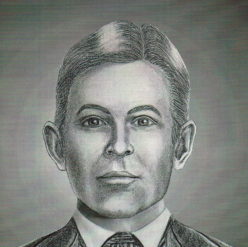A Conversion With Edwin J. Skeen
Editor’s Note: In honor of the 70th year of the Utah State Bar, the Bar Journal is presenting brief portraits of some of the most senior members of the Bar, particularly those whose admission to practice law in Utah predates the formation of the Utah State Bar in 1931.
Edwin J. Skeen was born January 2, 1906 in Ogden, Utah, the second of five children and the only son of Utah lawyer Jedediah D. Skeen. Twenty-three years later, he was admitted to practice law in Utah. Now age 95, Mr. Skeen is one of only three living members of the first class admitted to the Utah Bar.
As a boy, Mr. Skeen’s family moved from Ogden to Salt Lake City, where he worked as a farm hand on his family’s property. He graduated from the L.D.S. High School in 1923, and went on to the University of Utah, earning a Bachelor’s degree in philosophy with a minor in mathematics. His outstanding academic performance gained him admission to Stanford University Law School in 1926, where he excelled, despite a full load of classes, a correspondence course from the University of Utah, and work at odd jobs to earn money. After his first year at Stanford, the University of California, Berkeley Law School offered Mr. Skeen a scholarship, which he accepted, and completed his legal education there.
At Berkeley, Mr. Skeen’s impressive grades earned him a position as a staff member of the California Law Review. He wrote a Law Review article on commercial arbitration, which was accepted as his thesis for a doctoral degree. He graduated from Berkeley with a doctor of jurisprudence degree (similar to a masters in law) in 1929.
Upon returning to Utah, Mr. Skeen was admitted to practice law in the state on October 14, 1929, and began working at his father’s law firm, doing routine legal work. The practice of law at that time was not particularly lucrative because of the Great Depression. Businesses were closing, foreclosures were routine, and the entire country was in a financial panic. The father and son stayed in business by representing debtors in foreclosures on farms, ranches, and homes. The Skeens took cases for a $10.00 retainer, recovering the remainder of their fee only if they prevailed. At one time, the Skeens had several hundred cases pending in Utah Federal District Court, and in most of them were able to get an order to temporarily stop foreclosure.
In 1936 T.H. Humphreys, the state engineer, hired Mr. Skeen to oversee Utah water rights adjudication. He soon earned the title of “Special Assistant Attorney General” and a salary of $200 per month. In that position, which he held for nearly ten years, Mr. Skeen handled all water cases involving the state engineer, and all interstate water compact matters. These included the Bear River Compact and the Upper Colorado River Compact. Negotiations over the latter required Mr. Skeen to travel with the governor and other high state officials to Arizona, Colorado, California, Nevada, and New Mexico.
In 1945 the United States Department of the Interior hired Mr. Skeen to advise the Bureau of Reclamation, and to handle water rights litigation involving the United States in seven Western states. Over the following ten years, Skeen helped draft numerous interstate water compacts, particularly with Arizona, Wyoming and New Mexico. He drafted an agreement between the United States and Mexico which divided the Colorado River. He also drafted a compact between Nevada and California regarding the use of water from Lake Tahoe.
After ten years with the federal government, Mr. Skeen returned to private practice with his aging father. By this time, he had built an outstanding reputation because of his state and federal work, and readily resumed a rather large private practice. The Weber Basin Water Conservancy District in Ogden retained their services, as did the Truckee-Carson Irrigation District in Nevada, and many other irrigation companies. He also was actively engaged in trial work, condemnation, and water litigation. In 1982, Mr. Skeen joined the firm of VanCott, Bagley, Cornwall & McCarthy. He stayed with the firm in an “Of Counsel” position until 1990, when he left to resume practice as a sole practitioner.
Many of the cases Mr. Skeen oversaw during his career set the stage for today’s water jurisprudence, and many of the agreements he drafted still guide water use in the West. Mr. Skeen also distinguished himself by arguing two cases before the United States Supreme Court: Mangus v. Miller,1 in 1942, and Kesler v. Department of Public Safety,2 in 1961.
Edwin Skeen has made many valuable contributions to the legal community and to his clients throughout a long and productive career. He served as Chairman of the Natural Resource Section of the Utah State Bar, and received the Distinguished Natural Resource Lawyer of the Year Award. He is highly respected by his peers, and still maintains his membership in the Utah State Bar. The Utah Bar recognizes Mr. Skeen for his years of accomplishment and contribution to the Bar, and the State of Utah.
Footnotes
- 317 U.S. 178, 63 S.Ct. 182 (1942).
- 369 U.S. 153, 82 S.Ct. 807 (1962); overruled by Swift & Co. v. Wickham, 382 U.S. 111, 86 S.Ct. 258 (1965).
.entry-content
Taken from the Utah State Bar Website
